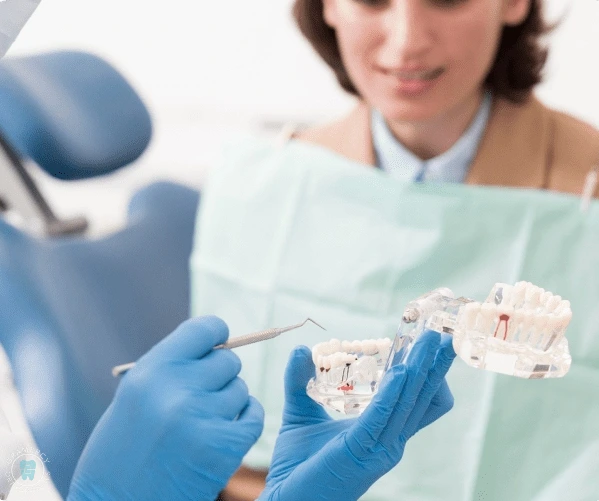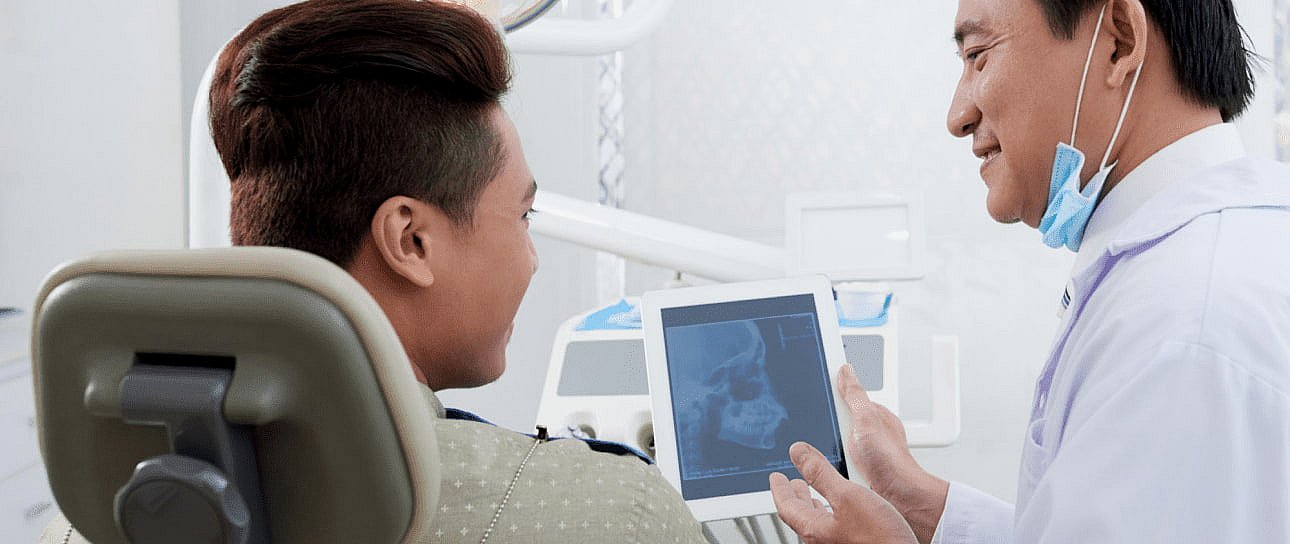
Jaw surgery is a surgical intervention focused on addressing structural and alignment problems in the jaw and teeth that orthodontics alone cannot fix. Conducted by experienced oral and maxillofacial surgeons upon an orthodontist’s recommendation, this surgery aims to enhance both the functional and aesthetic balance of the mouth, teeth, and face.

Jaw surgery tackles both practical issues and cosmetic concerns for those with jaw irregularities. It frequently plays an essential role in improving oral health and overall function.

When the jaw is out of alignment, it can disrupt everyday activities. Jaw surgery can address:
A properly aligned jaw plays a crucial role in maintaining facial symmetry and profile balance. Jaw surgery can accomplish:
Malocclusion, commonly known as a “bad bite” happens when the alignment of the upper and lower jaws is off, leading to difficulties in oral function and aesthetics. In more extreme instances, surgical intervention on the jaw is necessary.
Addressing these concerns enhances chewing ability, speech clarity, and facial symmetry while diminishing the risk of chronic dental problems such as gum disease and irregular tooth wear.
Severe malocclusion is treated through:
Obstructive sleep apnea (OSA) occurs when the airway is blocked during sleep, leading to interrupted breathing and inadequate rest. In severe instances, jaw surgery can provide a viable treatment option.
By adjusting the alignment of the upper and lower jaws, the airway becomes more open, targeting the primary cause of blockages.
Jaw surgery for sleep apnea offers a lasting remedy, enhancing overall health and decreasing the dangers associated with untreated OSA
Jaw surgery improves not only functionality but also facial aesthetics. By correcting jaw alignment, the face becomes more balanced and harmonious.
Benefits for aesthetics
By making precise adjustments, jaw surgery creates structural harmony while addressing health concerns.

Preparation is a important step to ensure optimal results. Patients are typically involved in pre-surgical evaluations, which may include orthodontic work or imaging studies. Steps include:
Your surgeon will evaluate your dental and facial anatomy and explain the procedure thoroughly.
Braces might be required to align the teeth correctly before the surgical procedure.
This will include dietary changes, stopping certain medications, and other health considerations.
Post-operative recovery and aftercare are essential components of the healing journey, playing a crucial role in facilitating a seamless return to everyday life after surgery. This phase of recovery necessitates a mix of self-care, professional support, and following specific instructions to achieve the best results. Thoughtful preparation for aftercare is vital to avoid complications, sustain progress, and encourage a long-lasting, healthy recovery. Here is an overview of important aspects that contribute to a successful recovery.
Effective management of post-surgery pain is crucial for comfort and healing. While some discomfort is normal, employing pain management techniques can greatly alleviate it.
Your doctor may prescribe over-the-counter pain relievers or other medications. Always follow dosage instructions carefully to prevent complications.
Methods such as heat or cold therapy, relaxation exercises, and light movement (as recommended by your healthcare provider) can help support pain management.

Nutrition and oral hygiene play a central role in promoting healing and preventing complications.
Based on the type of surgery, you might be required to adhere to a soft or liquid diet to minimize strain on the surgical site. It’s essential to heed your healthcare provider’s recommendations on which foods to eat or stay away from.
Maintaining cleanliness is crucial in avoiding infections. Be gentle while brushing, and adhere to any specific guidelines given by your surgeon if your surgery was related to the mouth or jaw.

Regular follow-ups enable your healthcare provider to monitor healing, adjust your treatment plan, and address any concerns early.
During appointments, the surgical site will be examined, pain levels will be assessed, and imaging/studies may be performed to track progress. These visits are crucial for a timely and successful recovery.

Physical therapy and targeted exercises are important for restoring functionality and mobility post-surgery.
Work with professionals who guide you through exercises tailored to your recovery needs and surgery type.
Simple at-home movements, provided by your healthcare provider or therapist, help regain strength and flexibility over time.

Similar to all surgical procedures, jaw surgery comes with inherent risks and possible complications. Although the majority of risks are controllable, having knowledge enables patients to implement appropriate precautions and make well-informed choices.

Potential risks may involve slight discomfort, swelling, or bleeding, along with more severe issues like infections, nerve damage, or undesirable changes in bite alignment. These complications can arise from factors such as existing medical conditions, surgical mistakes, or unique responses to healing.
To mitigate these risks, it’s crucial to engage in a detailed conversation with your surgeon. Gaining insight into the procedure, possible complications, and aftercare will facilitate a smoother recovery and reduce the chances of negative outcomes.
Jaw surgery, also known as orthognathic surgery, plays a crucial role in correcting jaw and facial deformities, providing both functional enhancements and improved appearance. It serves more than just aesthetic purposes; it also tackles important health issues and elevates overall quality of life.

Jaw surgery corrects severe misalignments that orthodontics alone cannot fix. Key benefits include:

Undergoing jaw surgery offers life-changing benefits:

Recent advancements are significantly improving outcomes for patients undergoing jaw surgery:
In summary, jaw surgery greatly enhances oral health, functionality, and aesthetics for those with jaw misalignment. With continuous technological advancements, the future holds the promise of safer and more effective treatments for patients.
Corrective jaw surgery offers life-changing benefits by improving functionality like chewing, speaking, and breathing, while also enhancing appearance and self-confidence. Although the recovery process can be demanding, the procedure often leads to long-term oral health improvements, reducing the risk of future issues and significantly improving overall quality of life.
In your initial consultation, inquire about the specialist’s background, available treatment choices, projected timelines, and expected outcomes. Talk about expenses, payment methods, and potential obstacles you may encounter during the treatment. This session is essential for clarifying the procedure and ensuring you have a comprehensive understanding of your care plan while addressing any questions you may have.
Post-surgery care varies based on individual circumstances. Some patients may require additional treatments, while others may not. The primary goal is to maintain and refine the results for long-term improvements in functionality and aesthetics. Your care team will provide specific recommendations to ensure lasting success and enhanced overall well-being.
© 2025 Best Orthodontists in NYC
Braces Invisalign Gramercy Ortho Dr. Barry Elaahi & Dr. Jason Berk, Board-certified Orthodontists in NYC,
All Rights Reserved.
Monday – Friday : 8:00am – 7:00pm
Saturday : 8:00am – 3:00pm
© Copyright 2025 Gramercy Orthodontics